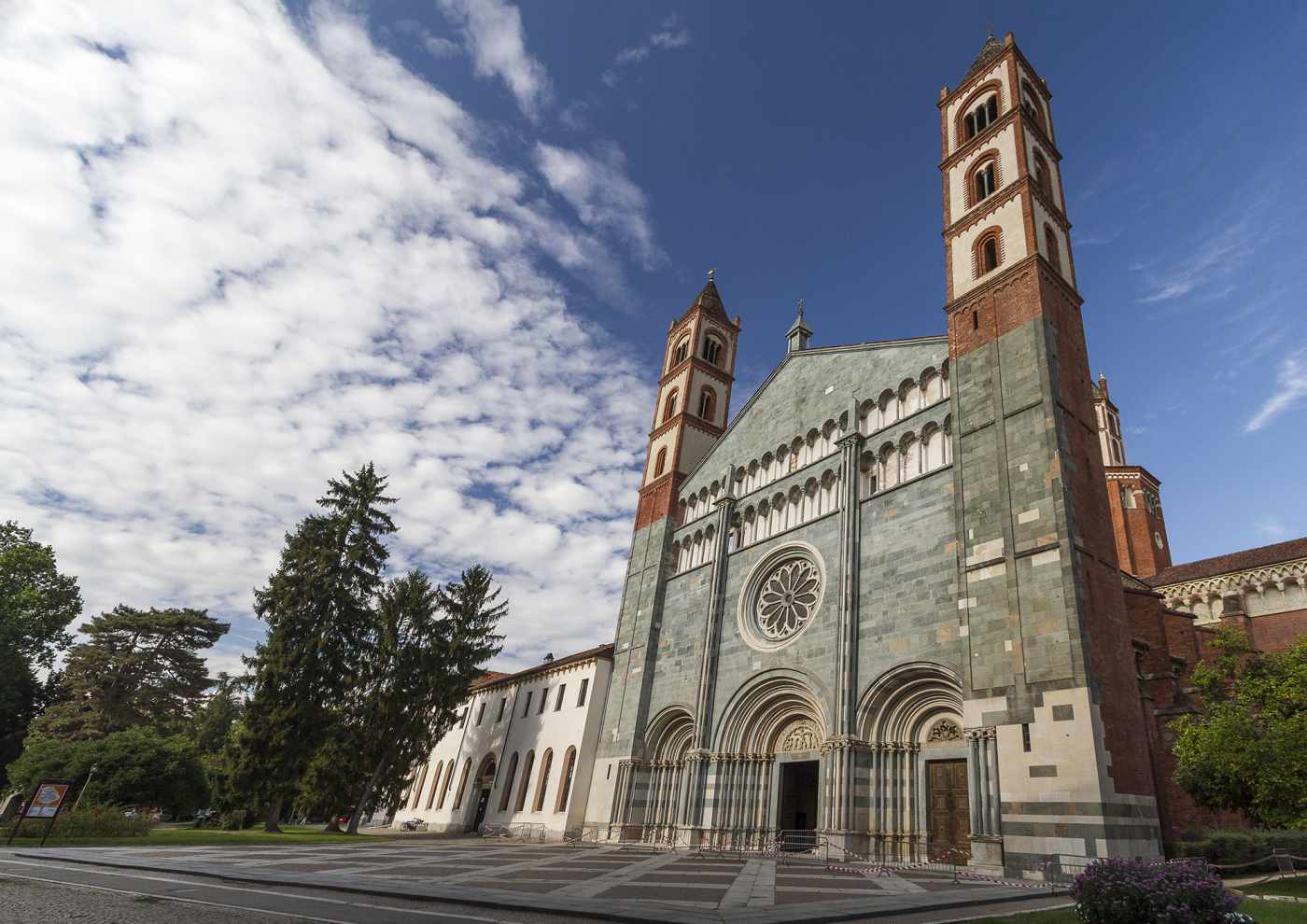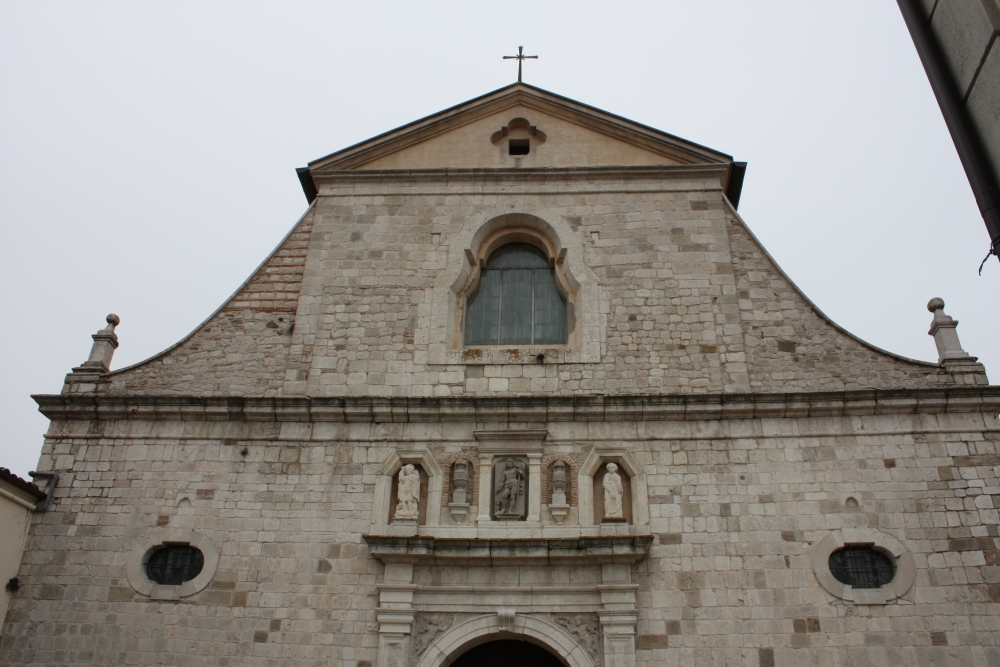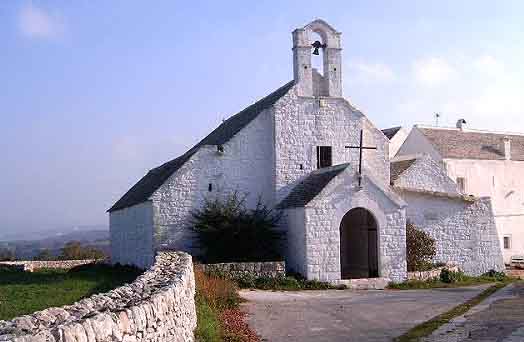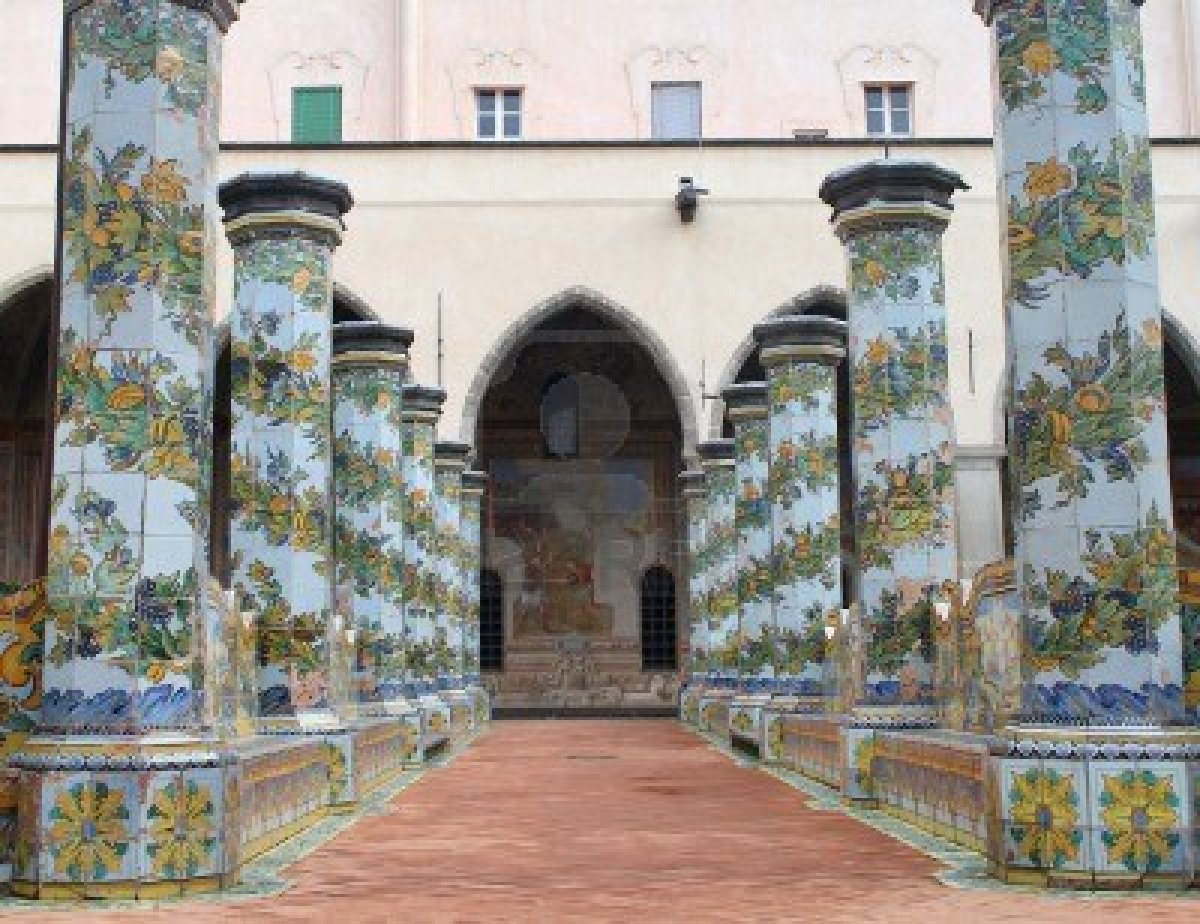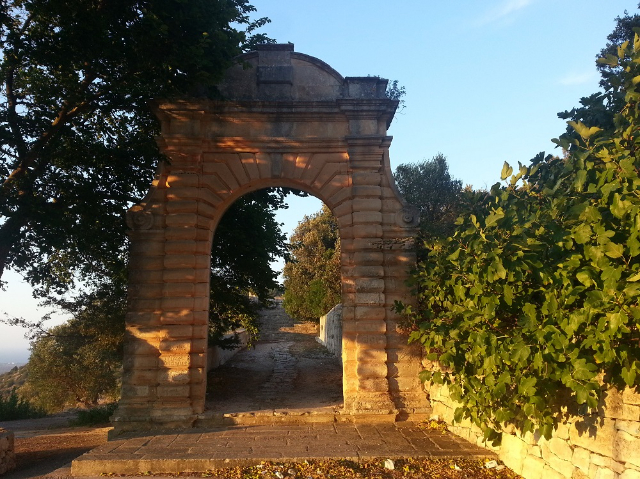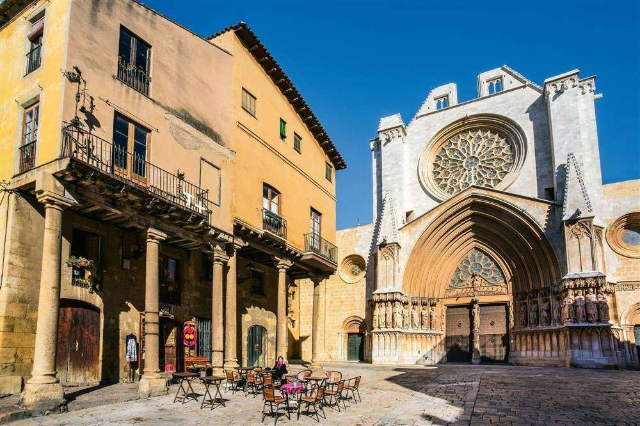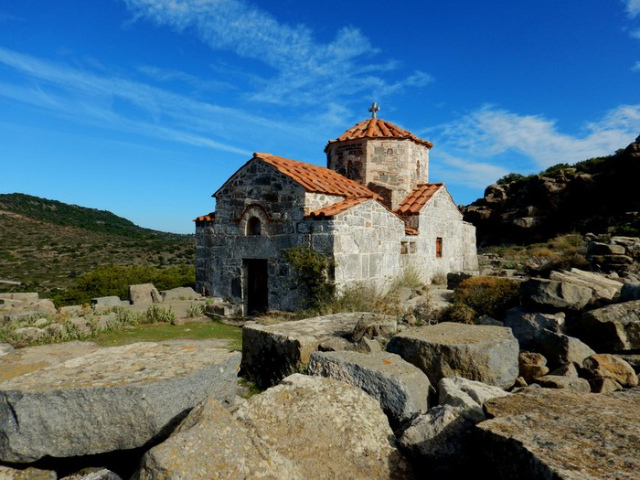Majestic. This is the first word that comes to mind when thinking of Sant’Andrea, the city’s symbolic monument. Founded in 1219 and completed in 1227, it is an early example of Italian Gothic architecture, inspired by Cistercian models, in which Romanesque and Gothic elements blend exemplarily together.
THE FACADE of the church blends Lombard-Emilian motifs (gabled roof, rounded portals, string-course cornices, opening of the side towers, double row of small loggias) with Provençal and Norman elements (deep splay of the portals, side towers and their cusps, crochet capitals) with a remarkable chromatic effect due to the grey-green stone cladding interrupted by the white marble of the small loggias and the red marble of the three portals. Above the central portal there is a rose window with twelve small columns and at the top of the tympanum an edicolette. On the sides of the facade two slender Gothic bell towers with single, double and triple lancet windows end with a spire.
In the LUNETTA DEL PORTALE MAGGIORE there is a sculpture made between 1220 and 1225, representing the martyrdom of Saint Andrew, the work of a sculptor of the school of Benedetto Antelami. The martyrdom scene is enclosed by a fluted frame, decorated with floral motifs and decorative architectural elements in the form of a vine shoot. In the centre of the arch is the figure of an angel, holding a crown, to carry the saint’s soul to heaven. The main scene has three worshippers on the left (a young man, a man with a beard and a woman with a veil on her head): in the centre is Saint Andrew on the cross; on the right are two men under the orders of the proconsul Aegea who are tying the saint to the instrument of martyrdom.
The other two lunettes are inferior in workmanship. In the one on the left is represented the cardinal Guala Bicchieri while he is offering the church to Saint Andrew on a throne; unfortunately a 19th century restoration replaced the heads. In the one on the right there is a ray of small columns with trilobal arches, not original, and inserted later as we can see from the missed adaptation of an ogival arch in a round arch.
The sides of the church are enlivened by buttresses and rampant arches that lean against the nave, with single lancet windows on the right and left eyes.
The BELL TOWER that rises between the right transept and the first lateral apse has a square base with mullioned and three-mullioned windows, cuspidate, raised between the end of the XIV and the beginning of the XV in the style of the basilica, but in a slanted position with respect to the axis of the church, probably because the foundations of the bell tower of the pre-existing church of Saint Andrew, demolished between 1215 and 1219, were used.
The interior of the church has a nave and two aisles, each consisting of six bays, and each rectangular bay of the nave corresponds to a square bay of the aisles. The protruding transept formed by rectangular bays is covered by a dome vault, included in an octagonal tiburium. On the transept there are four chapels of rectangular plan. Beyond the vast square space of the head of the transept there is the choir ending with a rectilinear wall. Four beam pillars, of great solidity, support the dome and the load of the dome by means of very strong arches; the conical trumpets of the dome have the symbols of the Evangelists carved on a shelf, of antelamic workmanship.
The last chapel on the right is occupied by the FUNERAL MONUMENT OF ABATE TOMMASO GALLO, dating back to the first half of the 14th century: in the large Gothic niche above the sarcophagus there is a fresco of the abbot himself in a chair among his pupils. In the cusp that rises above the archway is the crowning of the Virgin with musician angels. The beautiful figures in high relief on the front of the sarcophagus are in a style not prior to the middle of the 14th century. In the centre there is the Blessed Virgin with the Child who leaps towards the kneeling Abbot Tommaso, presented by Saint Andrew. On the right side there are St. Catherine of Alexandria and Dionysius the Pseudo-Areopagite, whose works were commented by Tommaso Gallo.
In the church there is also a 14th century crucifix, two 16th century confessionals and the inlaid choir from 1511, the work of Paolo Sacca and restored after 1802.
